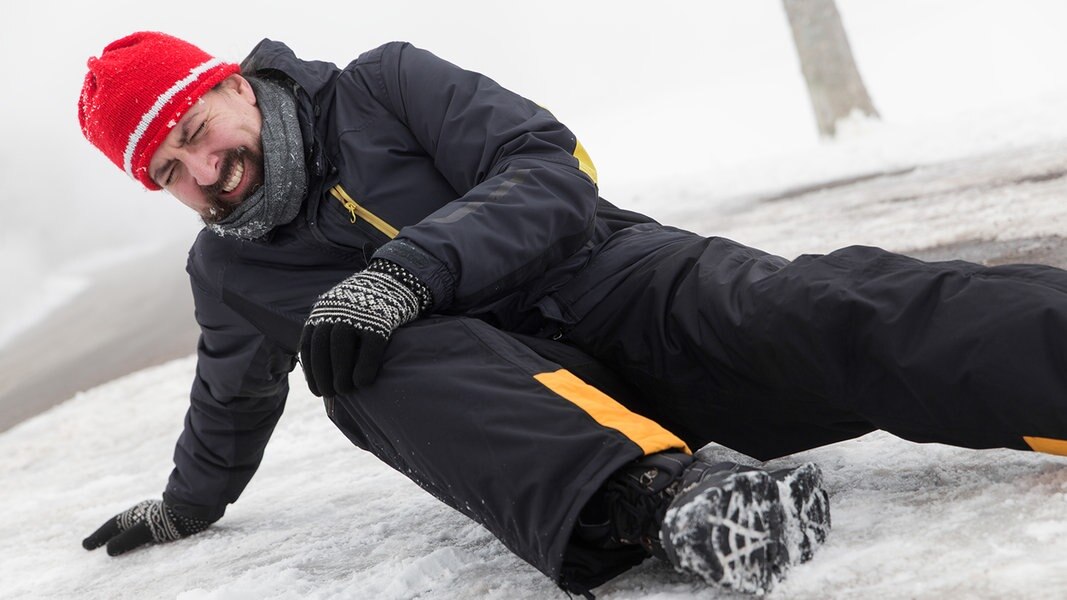As of: January 16, 2024 10:28 a.m
Snow, ice and freezing rain transform streets and sidewalks into glassy surfaces in winter. When walking, the right technique such as the penguin gait and simple aids can protect against falls.
In particular, older people and people who are already unsafe when walking are best advised to stay at home when there is black ice. Bicycles should also be left behind. In the worst case, falls can lead to injuries such as fractures of the femoral neck or head injuries. If going outside cannot be avoided at all, you can use certain techniques and aids to avoid falls.
Fences and railings provide support
If it is very slippery, it is advisable to move slowly and in a controlled manner, using anything that offers support – such as railings or fences. If possible, always keep a greater distance from particularly dangerous areas such as sidewalks and platform edges.
Move safely on ice with the penguin gait
If there is black ice, you should lean forward if possible so as not to fall backwards without stopping.
When it is slippery, the so-called penguin gait is also recommended, according to meteorologist Björn Goldhausen from the weather portal Wetteronline. This bird species is a role model for safe walking on black ice: “The penguin’s body and foot position are perfectly adapted to moving on ice.” It is important to waddle slowly and with small steps rather than walk. The foot should not only be planted with the heel, but completely. It is best to turn slightly outwards in order to distribute the body weight to the side.
Tilt your upper body forward as much as possible so that in the event of a fall you do not fall on your tailbone, back or back of the head. You also have the option of supporting yourself with your hands or knees. Such falls are usually less dangerous.
Fall correctly and mitigate your fall
If you do fall, you should try to keep your forearms and outstretched hands in front of your face to avoid breaking your wrist or nose. To mitigate the fall, it can also help to make yourself as round as possible.
Aids against this slip out
So-called shoe spikes are practical. These are rubber soles with small metal claws that can be pulled over the shoes. If you don’t have these in the house, you can put thick rubber bands, such as those from preserving jars, over your shoes. In principle, it is best to choose flat shoes with thick soles and a grippy tread when dealing with black ice. If you have stylish but slippery shoes with high or flat heels, take them with you in a bag and change them later.
Further information
During the course of Saturday, after dry and partly sunny periods in the north, it will rain heavily in some places. The snowfall limit rises to 800 meters in the Harz Mountains. more
Slippery roads and snowfall are a challenge for drivers. With a few tips you can get through the winter well. more
Rain? Sun? Storm? Here you can find the current weather and forecast for all of northern Germany. more
This topic in the program:
NDR Info | 12/05/2023 | 9:55 p.m
